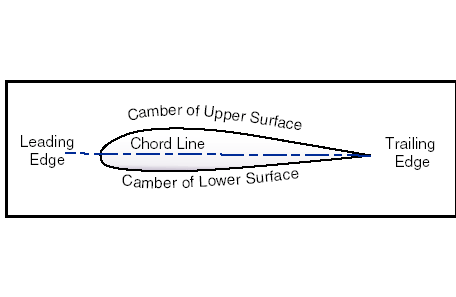

This is why you can’t find a full-scale airplane with a KF airfoil today. The 1974 findings by NASA were taken seriously, and the KF airfoil was categorized as a failed design by many professionals. The engineers also stated that the wing increased the overall drag and that their testing never substantiated Dick and Floyd’s claims. The team concluded in a short overall report that the KF airfoil had no advantages over conventional airfoil designs, or even a flat wing. The NASA team, however, based its airfoil models directly off of the patent, which was not the correct airfoil shape. The engineers decided to test the design’s performance. This caught the attention of a group of engineers that worked at NASA. While these problems were happening in the background, the design gained popularity in the aerospace community from the promising performance of the paper airplane and Dick and Floyd’s claims of its future applications and benefits. One of the biggest issues was that the diagramed airfoil design did not accurately resemble the actual wing profile. Unfortunately, there were some complications when filing and writing the patent. Dick and Floyd then filed for a patent in 1970. The aircraft flew like the paper airplane and resisted stalling, flew smoother, and glided longer than anything Floyd had ever seen. Photo provided by Dick Kline.Īfter the success of the paper airplane design, Floyd Fogleman, a modeler, expressed interest in the airfoil and built a large balsa model for testing. In addition to increasing the structure of the paper airplane, the stepped airfoil showed flight characteristics that would be desirable on any aircraft.ĭick Kline is shown here holding his paper airplane called The Condor, which featured the original KF airfoil design. Let’s dive in and take a closer look at this novel, and possibly revolutionary, wing design.ĭick originally designed the KF airfoil to be used in a more effective long-distance paper airplane.

The simplicity and performance of the KF airfoil have made it popular in the RC modeling community, but many people don’t know where it came from, or are skeptical about how it works. Dick helped create what he and many others believe to be the most effective airfoil ever invented. “When you ask yourself a question, you set your mind in motion looking for answers,” said Dick Kline, one of the credited inventors of the KF (Kline-Fogleman) airfoil design.

Most of us are familiar with the basic curved top and flat bottom of a traditional airfoil, and we generally regard it to create the most lift and best flight performance. As seen in the Summmer 2016 issue of Park Pilot.


 0 kommentar(er)
0 kommentar(er)
